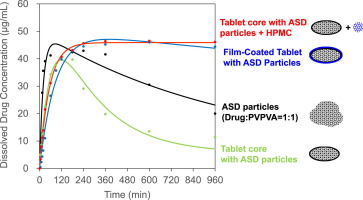- Home
- Blog
- News
- Basics
- Sources
- Agencies, Regulatory & Organisations
- CERSI Excipients Browser
- Excipient Report
- Excipient DMF List
- EXCiPACT Certified Companies
- Excipient Documentation
- Excipient EINECS Numbers
- Excipient E-Numbers
- FDA Inactive Ingredient List
- FDA GRAS Substances (SCOGS) Database
- IPEC Americas
- USP - U.S. Pharmacopeia
- Definitions
- Whitepapers / Publications
- Supplier
- Services
- Media
- Events
- 1st pharmaexcipients Poster Award
- Event Calendar
- Events featured by pharma-excipients
- 4th Annual Formulation & Drug Delivery Congress
- DDF Summit
- ExcipientFest Americas
- ExcipientFest Asia
- Global CompliancePanel
- International Conference and Exhibition on Pharmaceutics & Novel Drug Delivery Systems
- Formulation & Drug Delivery USA Congress
- Laboratory Medicine 2018
- Making Pharmaceuticals Europe
- Making Pharmaceuticals Exhibition
- Pharma Integrates
- PharmaExcipients China @CPhI China
- TTC Technology Training Center
- Jobs
- Online Sourcing
- Contact
19. February 2018
The effects of tablet preparation and subsequent film coating with amorphous solid dispersion (ASD) particles that were composed of a drug with poor water solubility and hydrophilic polymers were investigated. ASD particles were prepared with a drug and vinylpyrrolidone–vinyl acetate copolymer (PVPVA) or polyvinylpyrrolidone (PVP) at a weight ratio of 1:1 or 1:2 using a melt extrusion technique. Tablets were prepared by conventional direct compression followed by pan coating. A mathematical...
26. January 2018
The understanding of amorphous solid dispersions has grown significantly in the past decade. This is evident from the number of approved commercial amorphous solid dispersion products. While amorphous formulation is considered an enabling technology, it has become the norm for formulating poorly soluble compounds.
03. February 2017
The aim of this research was to develop immediate release tablets comprising solid dispersion (IRSDTs) of tadalafil (Td) in a vinylpyrrolidone and vinyl acetate block copolymer (PVP-VA), characterized by improved dissolution profiles. The solid dispersion of Td in PVP-VA (Td/PVP-VA) in a weight ratio of 1:1 (w/w) was prepared using two different processes i.e. spray drying and ball milling. While the former process has been well established in the formulation of IRSDTs the latter has not been...
30. June 2015
Amorphous formulations of APIs in polymers tend to absorb water from the atmosphere. This absorption of water can induce API recrystallization, leading to reduced long-term stability during storage. In this work, the phase behavior of different formulations was investigated as a function of relative humidity. Indomethacin and naproxen were chosen as model APIs and poly(vinyl pyrrolidone) (PVP) and poly(vinyl pyrrolidone-co-vinyl acetate) (PVPVA64) as excipients. More


